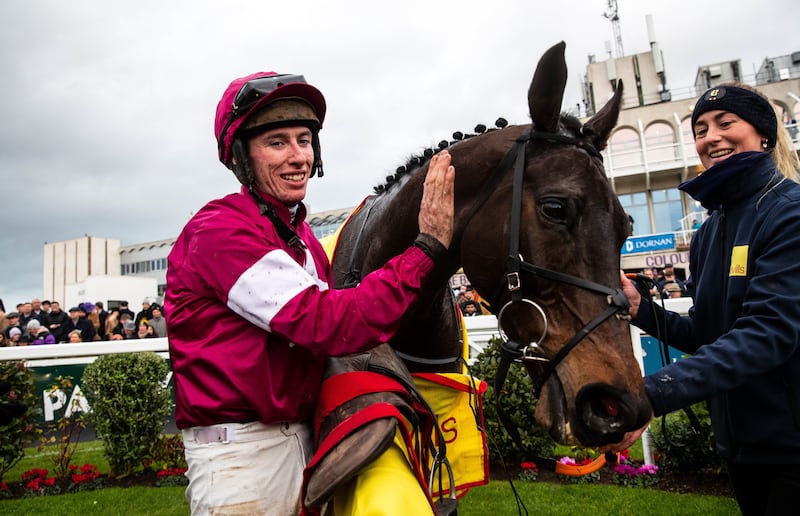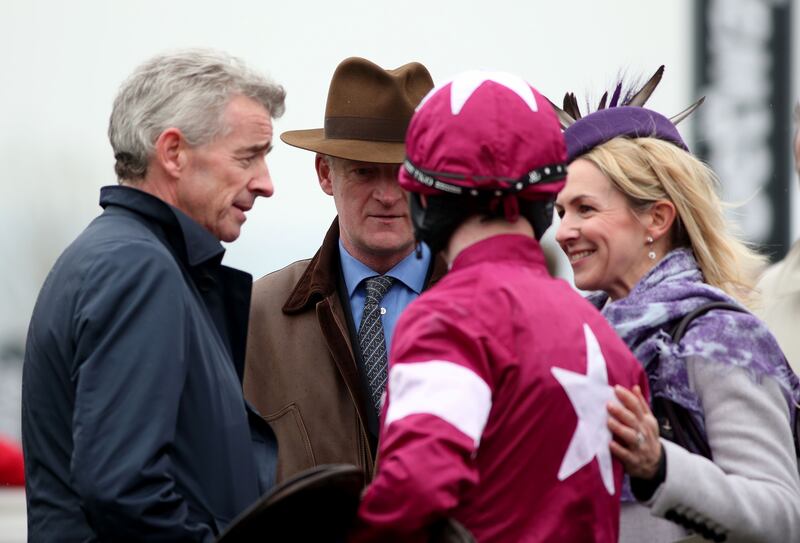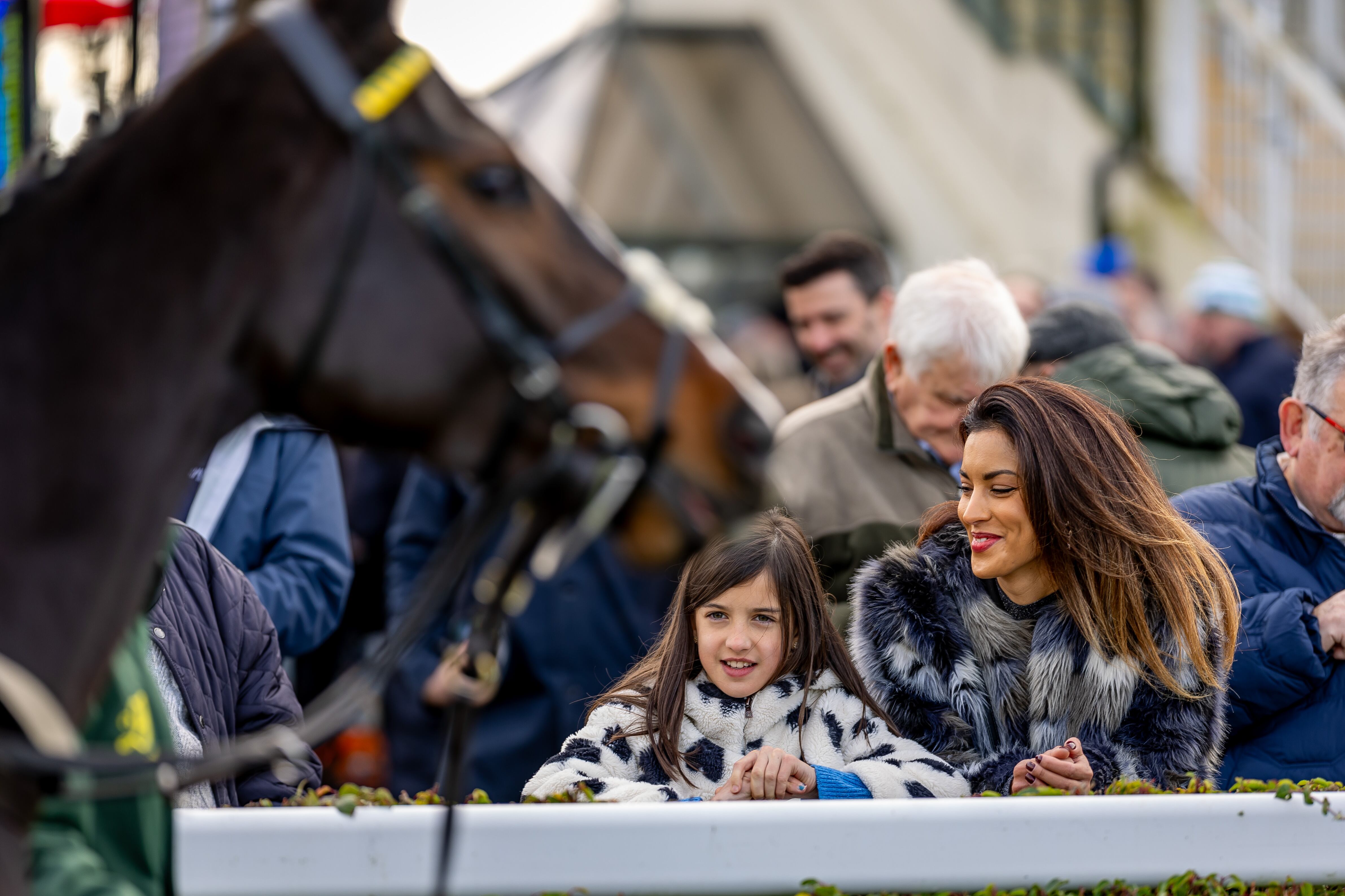In 2019, Michael O’Leary announced his racing team would be phased out within five years. The Ryanair boss was unequivocal. His young family meant he didn’t have time to go racing. The plan allowed horses finish their careers and trainers a chance to replace them. But there would be no new purchases. The five years are up, and the man famed for his straight shooting hasn’t gone away, you know.
Admittedly, there aren’t as many runners in the famous maroon Gigginstown Stud silks as there used to be. Those numbers peaked in the 2017-18 season with 160 winners from almost 1,000 runners in Ireland and Britain. They included the first of Tiger Roll’s Grand National victories. Even JP McManus was powerless to prevent his great rival topping the owners table in Ireland.
In the next season, O’Leary had a best-ever haul of 159 winners in Ireland, was crowned champion owner for a seventh time, secured a second National with Tiger Roll and – just to keep everyone on their toes, it seemed – threw the sport such an unexpected curveball that some fretted it might never be the same again.
“As my children are growing into teenagers I am spending more and more of my time at their activities and I have less and less time for National Hunt racing, a situation that will continue over the foreseeable future,” he said.
RM Block
“I hope that by running down our string over an extended four- or five-year period, it will give trainers ample time to replace our horses without disruption.”
Gigginstown’s annual investment in young stock had been estimated at €15 million. Every year it acquired more than 50 of the best prospects from sales rings, point-to-point fields and from France. Breeders, producers and sales companies feeding off that outlay were left to ponder an uncertain commercial outlook.
Admittedly, racing stories about ridiculously rich owners getting bored and opting out aren’t rare. True to his word, O’Leary has been an infrequent presence on racecourses since then. Cheltenham’s appeal remains intact but a single day at Leopardstown last Christmas was a rare domestic appearance by the renowned businessman.
Nevertheless, if personal sightings are unusual, Gigginstown itself remains among the most prominent ownerships in the game. Proof of that – as well as, it seems, the old game’s continuing appeal – is obvious right from the start of this weekend’s Dublin Racing Festival.

O’Leary’s Predator’s Gold is favourite for the opening Nathaniel Lacy Novices Hurdle. So is Storm Heart in the following McCann Fitzgerald Spring Juvenile Hurdle. Both are Grade One contests. Later on the card, Conflated will try to repeat his 2022 success in the Paddy Power Irish Gold Cup.
There is abundant evidence of O’Leary’s readiness to continue splashing out on potential top-class talent that take his fancy.
A hefty £450,000 (almost E500,000) was paid out for the double-bumper winner Jalon D’oudairies. The exciting mare, Brighterdaysahead, favourite for Cheltenham’s Mares novice hurdle cost a cool E310,000. The E250,000 French purchase Gold Dancer makes his Irish debut in tomorrow’s Grade One novice hurdle alongside King Of Kingsfield.
The latter is trained by Gordon Elliott, who prepared Tiger Roll as well as O’Leary’s 2016 Cheltenham Gold Cup hero, Don Cossack. When Elliott got embroiled in controversy over a notorious digital image, O’Leary rallied behind him and invested in store horses to give to Elliott once he’d served a six-month licence suspension in 2021.
Gold Dancer’s appearance is evidence of how flexible O’Leary can be. Having famously removed 60 horses from Willie Mullins in 2016 due to a dispute over training fees, the pair reunited six years later. Both Predators Gold and Storm Heart are more evidence of that détente.
They are among 35 Gigginstown winners in Ireland this campaign, two more than during all of last season, and part of a healthy 23 per cent strike rate from 153 runners. If it’s nowhere near the big numbers of half a dozen years ago, O’Leary remains one of the sport’s power brokers with perhaps up to 65 horses in training overall.
[ Michael O’Leary’s decision to leave a seismic blow to racingOpens in new window ]

Despite not going racing much, he apparently also retains his avid day-to-day interest in racing affairs.
“I would say he remains hugely engaged, although you don’t see him on the racecourse as frequently as you did a decade ago,” said one industry insider who preferred to remain anonymous.
“There probably isn’t an ideal number they’re aiming at, but I guess they would have 60 to 65 in training right now. I would say they’re trying to buy quality stock, whenever and wherever it appears. The Gold Cup is the Holy Grail. But, like it always was, the aim is to get their hands on Cheltenham horses,” they added.
Over two decades, O’Leary’s brother, Eddie, a veteran bloodstock professional, has been central to Gigginstown’s success in acquiring stars such as the 2006 Gold Cup hero War Of Attrition. Reluctant to comment on what might constitute any future “sweet spot” in terms of numbers, he merely replied: “We’re only interested in having a couple of nice horses, that’s all.”
It appears to be a rare instance of O’Leary understatement considering how even a slimmed down operation can still target a prestige fixture like the Dublin Racing Festival with 14 runners in all.
In the past, Gigginstown-owned horses have been successful in all the Grade One races up for grabs bar the Dublin Chase, which only got top-flight status in 2018. That was just as O’Leary was formulating his get-out plan. That he hasn’t followed through on it, as originally believed, is ultimately racing’s good fortune.
“It enabled them to rationalise the set-up substantially. But in fairness, at the end of each year there always was a rationalisation, and they would trim the bottom 20 or 30 per cent,” one racing expert commented.
That trim now occurs from a smaller but still substantial base, one that in the immediate future is still equipped to maintain the racing ambitions of a famously competitive figure who once declared, with a typically colourful comparison, his intention to go on and on “like Chairman Mao”.
- Sign up for push alerts and have the best news, analysis and comment delivered directly to your phone
- Find The Irish Times on WhatsApp and stay up to date
- Our In The News podcast is now published daily – Find the latest episode here




















